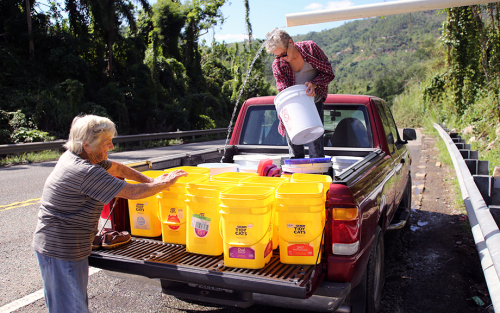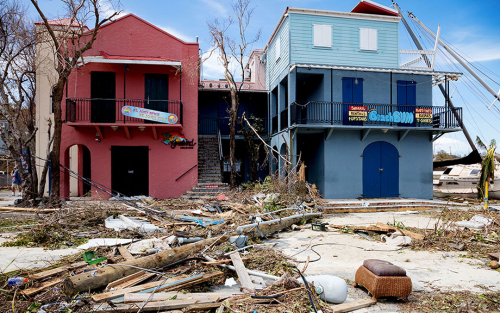Just Released: Labor Markets in the Region Are Exceptionally Tight

At today’s economic press briefing, we examined labor market conditions across our District, which includes New York State, Northern New Jersey, and Fairfield County, Connecticut, as well as Puerto Rico and the U.S. Virgin Islands. As the island economies continue to recover and rebuild from the destruction caused by last year’s hurricanes, employment has edged up in Puerto Rico and stabilized in the U.S. Virgin Islands. Meanwhile, as has been true throughout the expansion, New York City remains an engine of job growth, while employment gains have been more moderate in Northern New Jersey and fairly sluggish across most of upstate New York. Nonetheless, it has become more difficult for firms to find workers throughout the New York-Northern New Jersey region. It may not be terribly surprising that labor markets have tightened in and around New York City, where job growth has been strong, but labor markets have also tightened in parts of upstate New York, even in places where there has been little or no job growth. This is because labor markets are tightening as a result of changes in both labor demand and labor supply. In upstate New York, a decline in the labor force has reduced the pool of available workers.
Just Released: New York State’s Community Colleges are Successfully Partnering with Employers

Community colleges frequently work with local employers to help shape the training of students and incumbent workers. This type of engagement has become an increasingly important strategy for community colleges to help students acquire the right skills for available jobs, and also helps local employers find and retain workers with the training they need. The Federal Reserve Bank of New York conducted a survey of community colleges in New York State with the goal of documenting the amount and types of these kinds of activities taking place. Our report, Employer Engagement by Community Colleges in New York State, summarizes the findings of our survey.
Puerto Rico Post‑Maria: Twelve Months of Hardship

Puerto Rico recently observed the one-year anniversary of Hurricane Maria—the most destructive storm to hit the Commonwealth since the San Felipe Segundo hurricane in 1928. Maria, combined with Hurricane Irma, which had glanced the island about two weeks prior, is estimated to have caused nearly 3,000 deaths and tens of billions of dollars of physical damage Millions went without power for weeks, in most cases months. Basic services—water, sewage, telecommunications, medical care, schools—suffered massive disruptions. While it is difficult to assign a cost to all the suffering endured by Puerto Rico’s population, we can now at least get a better read on the economic effect of the storms. In this blog post, we look at a few key economic indicators to gauge the negative effects of the storms and the extent of the subsequent rebound—not only for the Commonwealth as a whole, but for its various geographic areas and industry sectors. We also examine data from the New York Fed Consumer Credit Panel to assess how well households held up financially and what effects the home mortgage foreclosure and payment moratoria had.
Just Released: August Regional Survey—Businesses See Tariffs Raising Prices
This week, we released our August surveys of manufacturers and service firms. Our Supplemental Survey Report, released this morning, reveals how businesses view the effects of recent trade policy on their costs, prices, sales, and profits. The results suggest that recent tariffs are raising both input costs and selling prices for local businesses, and these effects appear to be more widespread for manufacturers than for service firms.
Just Released: Beige Book Points to Moderate Growth and Tight Labor Markets

The New York Fed’s latest Beige Book report—based on information collected through July 9—points to sustained moderate growth and tight labor markets in the region. Manufacturers and wholesalers noted a persistent rise in economic activity over the first half of this year. However, a number of contacts in these sectors remarked that tariffs have raised their costs, and uncertainty about future trade policy was cited as a concern by businesses in a variety of industries. Meanwhile, businesses in most service industries continue to report flat to modestly expanding activity. And while consumer spending has remained fairly steady, consumer confidence edged up to a cyclical high, in large part due to an exceptionally positive assessment of the labor market.
U.S. Virgin Islands’ Economy Hit Hard by Irma and Maria

In the nine months that have passed since Hurricanes Irma and Maria ravaged the Caribbean, much interest has been focused on Puerto Rico and its roughly 3.3 million American citizens, who weathered the largest blackout in U.S. history. However, far less attention has been paid to the U.S. Virgin Islands, even though St. Thomas, St. Croix, St. John, and a number of smaller islands suffered comparable devastation. This is partly attributable to their much smaller population: the U.S. Virgin Islands (“Virgin Islands”) is home to roughly 105,000 people—1/30th Puerto Rico’s population. Even so, this territory is also part of the United States and the New York Fed’s district. In this post, we examine roughly six months of economic and related data on the Virgin Islands’ economy to better ascertain the extent of disruption and subsequent recovery from the devastation of Hurricanes Irma and Maria.
Why New York City Subway Delays Don’t Affect All Riders Equally

The state of the New York City subway system has worsened considerably over the past few years. As a consequence of rising ridership and decaying infrastructure, the network is plagued by delays and frequently fails to deliver New Yorkers to their destinations on time. While these delays are a headache for anyone who depends on the subway to get around, they do not affect all riders in the same way. In this post, we explain why subway delays disproportionately affect low-income New Yorkers. We show that wealthier commuters who rely on the subway are less likely to experience extensive issues on their commutes.
Just Released: Puerto Rico and the U.S. Virgin Islands after Hurricanes Irma and Maria

An examination of the fallout from Hurricanes Irma and Maria on the economies of Puerto Rico and the U.S. Virgin Islands was the focus of an economic press briefing today at the New York Fed. Both U.S. territories were suffering from significant economic downturns and fiscal stress well before the storms hit in September 2017, raising concerns about their paths to recovery.
Just Released: Very Favorable Business Climate Indicated in February Business Leaders Survey
The region’s services sector continues to experience solid growth, according to the New York Fed’s February Business Leaders Survey. The survey’s business climate index reached a record high, and the activity, employment, and capital spending indexes were all fairly steady at high levels, indicating continued expansion. Firms were increasingly optimistic about future business conditions, and strong gains in employment were expected in the months ahead. Notably, price pressures picked up, with the prices paid index advancing to a level not seen since 2014, and the prices received measure reaching its highest mark in six years.
Just Released: Great Recession’s Impact Lingers in Hardest‑Hit Regions

The New York Fed’s Center for Microeconomic Data today released our Quarterly Report on Household Debt and Credit for the fourth quarter of 2017. Along with this report, we have posted an update of state-level data on balances and delinquencies for 2017. Overall aggregate debt balances increased again, with growth in all types of balances except for home equity lines of credit. In our post on the first quarter of 2017 we reported that overall balances had surpassed their peak set in the third quarter of 2008—the result of a slow but steady climb from several years of sharp deleveraging during the Great Recession.










 RSS Feed
RSS Feed Follow Liberty Street Economics
Follow Liberty Street Economics